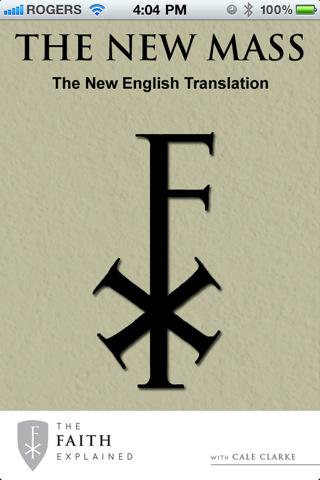 Matt Warner over at Fallible Blogma mentions The New Mass app for iOS and Android in his collection of new Mass resources. Check out the article here. Oh, and make sure you watch those great LifeTeen videos on the new translation!
Matt Warner over at Fallible Blogma mentions The New Mass app for iOS and Android in his collection of new Mass resources. Check out the article here. Oh, and make sure you watch those great LifeTeen videos on the new translation!
Archive for month: November, 2011
 If you attended Mass earlier today, you witnessed the end of an era. Today was the final celebration of the liturgy with the now “old” English translation of Mass, officially known as the 2nd Edition of the Roman Missal in English. Beginning tonight with the vigil Masses for the 1st Sunday of Advent, we will be using the 3rd Edition of the Roman Missal – the new English translation – in North America, and in many other English-speaking countries around the world.
If you attended Mass earlier today, you witnessed the end of an era. Today was the final celebration of the liturgy with the now “old” English translation of Mass, officially known as the 2nd Edition of the Roman Missal in English. Beginning tonight with the vigil Masses for the 1st Sunday of Advent, we will be using the 3rd Edition of the Roman Missal – the new English translation – in North America, and in many other English-speaking countries around the world.
I can’t wait to get started with the new translation. Since I created The New Mass app for iOS and Android, and have been giving all kinds of presentations explaining the new Missal, one might expect that. But I really do believe this is going to be great. Pope Benedict said when the final text was presented to him last year that he hoped it would serve as “a springboard for renewal of Eucharistic devotion all over the English-speaking world.” So, let’s dive in!
How about you? Will there be anything you’ll miss about the old translation, or is there anything you can’t wait to hear in the new? Let us know in the comments below.
 The Old Testament readings at daily Mass lately have been taken from the book of Daniel. This was a book that Jesus drew from in important ways to explain his identity. In today’s first reading, we witness Daniel’s incredible night visions:
The Old Testament readings at daily Mass lately have been taken from the book of Daniel. This was a book that Jesus drew from in important ways to explain his identity. In today’s first reading, we witness Daniel’s incredible night visions:
I saw in the night visions, and behold, with the clouds of heaven there came one like a son of man, and he came to the Ancient of Days and was presented before him. And to him was given dominion and glory and kingdom, that all peoples, nations, and languages should serve him; his dominion is an everlasting dominion, which shall not pass away, and his kingdom one that shall not be destroyed.
– Daniel 7:13-14
Many Christians are under the mistaken impression that the term “Son of God” refers to Jesus’ divine nature, while “Son of Man” (which is Jesus’ favorite self-designation in the Gospels) is a reference to his human nature. In reality, the opposite is the case. Now, don’t get me wrong – Jesus is God the Son, the unique, “only-begotten son” of the Father (cf. John 1:18, 3:16). But, in the Old Testament, all Israel was known as God’s “son” (see Hos 11:1), with individual Israelites known as the “sons of God” in an adoptive sense.
The passage from Daniel above speaks of an enigmatic “one like a son of man”, coming on the clouds of heaven, who approaches the “Ancient of Days” (God the Father) and receives an indestructible kingdom and the service of all people. This passage is quoted by Jesus when he is on trial before the high priest. At issue is his messiahship.
And the high priest stood up in the midst, and asked Jesus, “Have you no answer to make? What is it that these men testify against you?” But he was silent and made no answer. Again the high priest asked him, “Are you the Christ, the Son of the Blessed?” And Jesus said, “I am; and you will see the Son of Man seated at the right hand of Power, and coming with the clouds of heaven.” And the high priest tore his garments, and said, “Why do we still need witnesses? You have heard his blasphemy. What is your decision?” And they all condemned him as deserving death.
– Mark 14:60-64
The high priest certainly understood what Jesus meant by referring to himself as “Son of Man”. He is that figure who Daniel had envisioned so long ago – the everlasting King.
 We are thrilled to announce that The New Mass app, the #1 app for the new English translation of the Mass, is now live in the Android App Market! Click here to download it!
We are thrilled to announce that The New Mass app, the #1 app for the new English translation of the Mass, is now live in the Android App Market! Click here to download it!
We’re so happy to offer you this incredible tool for the Mass, alongside our popular iPhone app.
Our team has been working some very long hours on this one, especially the great Batsirai Chada. My hat’s off to you, big guy!

